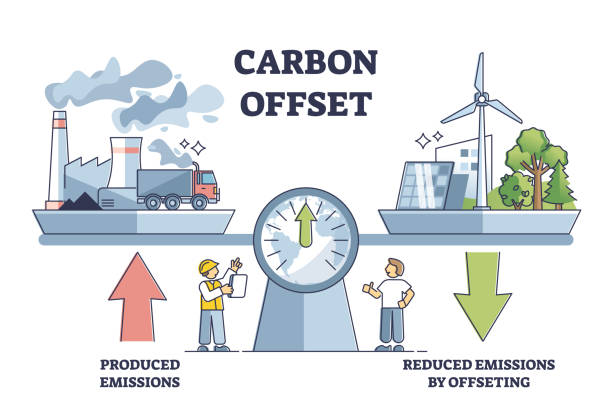You may live a healthy lifestyle and save money by lowering your carbon footprint. These advantages of minimizing your carbon footprint also mean you’re contributing to the fight against climate change, whether it’s through cleaner air, a healthier diet, or lower energy costs.
Amazingly, only 100 businesses account for 71% of all greenhouse gas emissions in the world. However, it doesn’t follow that people don’t also leave a carbon imprint. All of our deeds and lifestyle decisions have an effect on the environment.
A carbon footprint is essentially the entire quantity of greenhouse gas emissions that a person, business, event, or product has produced.
Consequently, you may evaluate the environmental impact of your lifestyle by looking at your carbon footprint. For example, if you travel to work every day by vehicle, your carbon footprint may be higher than a person who uses public transportation since you produce more greenhouse gas.
The Average Carbon Footprint
So, what is the average amount of carbon footprint? In actuality, it’s a little challenging to respond to this question. Whether you’re referring to averages for an individual, a company, or a nation, it truly depends on which ones you’re referencing. An entity’s carbon footprint is still influenced by a wide range of circumstances.
Emissions Measurements
Everything is measured in CO2e, or carbon dioxide equivalent, which is the accepted measurement for calculating carbon footprints. In essence, it converts any quantity or kind of greenhouse gas into the equivalent amount of CO2 that might have an impact on global warming. It merely enables us to compare the effects of various gasses easily.
There are many studies and pieces of information that reveal average carbon emission levels. However, territorial emissions are the main focus of a lot of the statistics that governments disclose. Basically, this is talking about the greenhouse gasses that a country produces. According to figures from 2018, the UK’s annual emissions of CO2e were 448.5 million tonnes, a 43% decrease from 1990.
This information seems promising. There are other aspects to take into account when calculating the overall carbon footprint, though. Data on consumption-related emissions considers who is accountable for the emissions, regardless of where they are created.
How Can You Calculate Your Own Carbon Footprint, then?
Once you are aware of your carbon footprint and the aspects of your lifestyle that have the biggest influence, you can start looking for ways to reduce it.
Calculating your carbon footprint is a smart place to start if you are willing to put effort in order to help for a better environment. For a simpler option, this CarbonAPI is worth checking out.
This Carbon Offset API evaluates your emissions-related actions to determine your carbon footprint. The purpose of this API is to help combat climate change. You can plan projects to make up for the environmental harm using the data the API provides.
It helps you to calculate carbon emissions accurately and makes it easier to buy environmentally beneficial offsets, which can be used to reduce emissions from energy usage and transportation.
The projects supported by CarbonAPI comply with or exceed the strictest international regulations governing carbon offsetting, and their daily carbon emission reductions are rigorously monitored and certified.
This API establishes the distance traveled and the amount of fuel consumed. They can assist you in using this data to immediately offset the carbon emissions produced by your fleet. You might be able to reduce your carbon footprint by utilizing one, even though electric automobiles have one as well.Their objective is to create or support climate change-related initiatives that will minimize human effect on the environment. Developers can give users accurate estimates of carbon emissions thanks to CarbonAPI.

